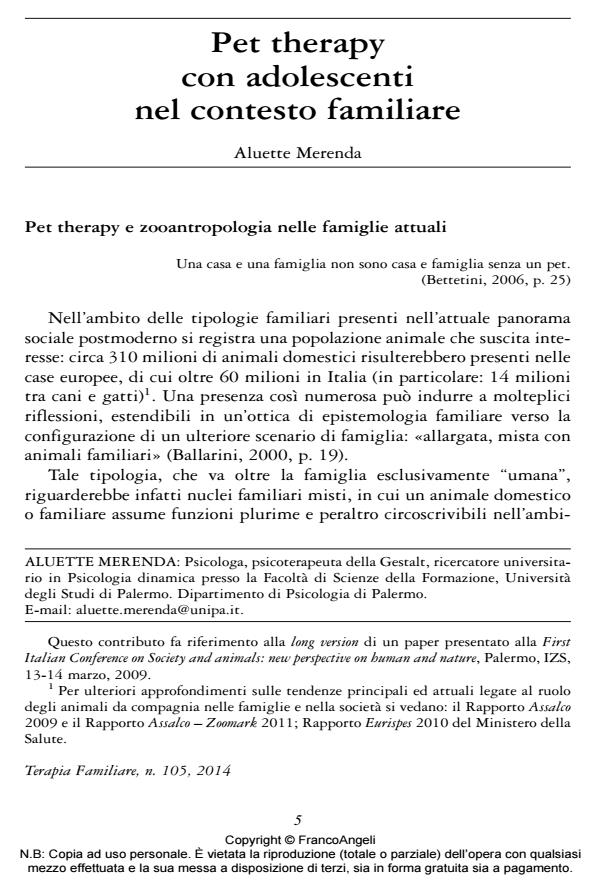Pet therapy con adolescenti nel contesto familiare
Journal title TERAPIA FAMILIARE
Author/s Aluette Merenda
Publishing Year 2014 Issue 2014/105
Language Italian Pages 18 P. 5-22 File size 142 KB
DOI 10.3280/TF2014-105001
DOI is like a bar code for intellectual property: to have more infomation
click here
Below, you can see the article first page
If you want to buy this article in PDF format, you can do it, following the instructions to buy download credits

FrancoAngeli is member of Publishers International Linking Association, Inc (PILA), a not-for-profit association which run the CrossRef service enabling links to and from online scholarly content.
In this article, the Author aims to delineate the therapeutic value of domestic animals (Pets) in the family environment and in care settings, tracking psycho-educational aspects as well as therapeutic objectives. In particular, within a familiar developmental model and in the zooanthropology approach, which considers the interactive process between animals and humans, the study outlines the characteristics of a care setting as well as those therapists who are involved in a hetero-specific meeting, in which a co-partnership and its therapeutic value is emphasised. On the assumption that pets do not constitute medication nor are they supporters of miraculous cures, the Author focuses on Pet relationship Activities assisted by two co-therapists (human and animal), aimed at the education on policy and rehabilitation benefits, as well as at the cross over between individual and family risk or at psychopathological treatment. The focus of the article is specifically directed at several dimensions: Pet therapy and Zooanthropology in new families; Pet relationship and its methodological issues and perspectives; Pet relationship as a hetero-specific meeting in adolescence.
Keywords: Pet relationship, Zooanthropology, Pet therapy, Pet pedagogy, new families, care settings.
Aluette Merenda, Pet therapy con adolescenti nel contesto familiare in "TERAPIA FAMILIARE" 105/2014, pp 5-22, DOI: 10.3280/TF2014-105001